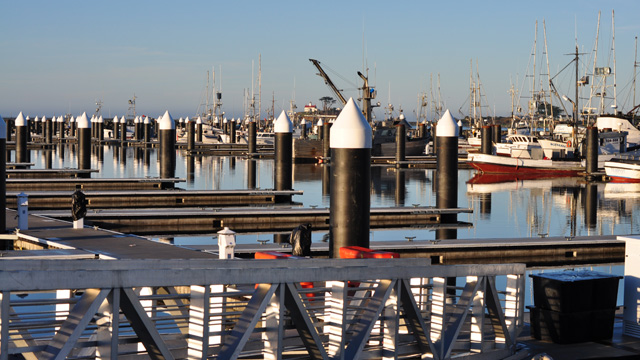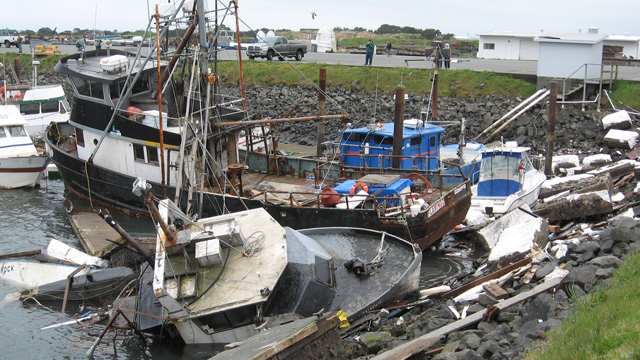
Richard Young admits that this week’s magnitude 6.9 earthquake off the Northern California coast made him sit up in bed. This one did not produce a menacing tsunami. But if it had, the Crescent City harbormaster says he’d be ready.
Three years ago — almost to the day — a wave generated by Japan’s monstrous Tohoku earthquake destroyed Crescent City’s fishing harbor.
“It was devastating,” recalls Young, “not only for the harbor but for the entire community up here because this harbor and the commercial fishing activity that takes place here is an enormous part of the local economy, the local identity, and we were at risk of losing all of it at that time.”
Three years and $50 million later, Young says, “It’s fair to say we’re all the way back at this point.” The harbor has been rebuilt with new slips and gangways, and a new feature that may be most important of all.
“It’s the first tsunami-resistant marina that we know of anywhere on the West Coast,” Young adds with pride.
